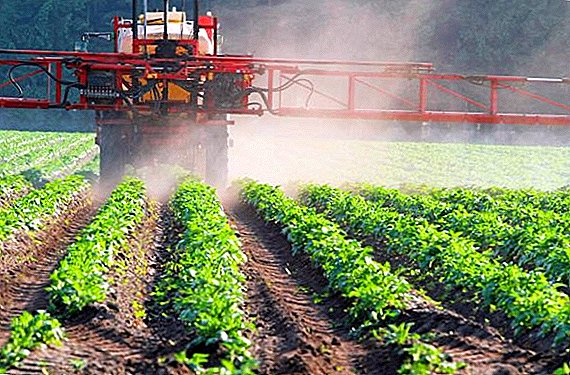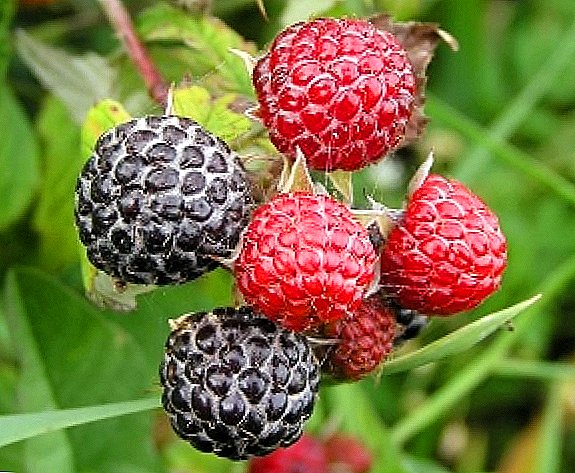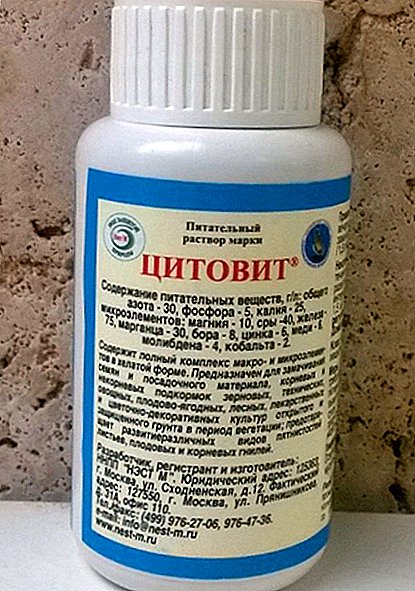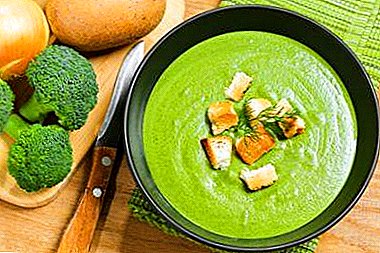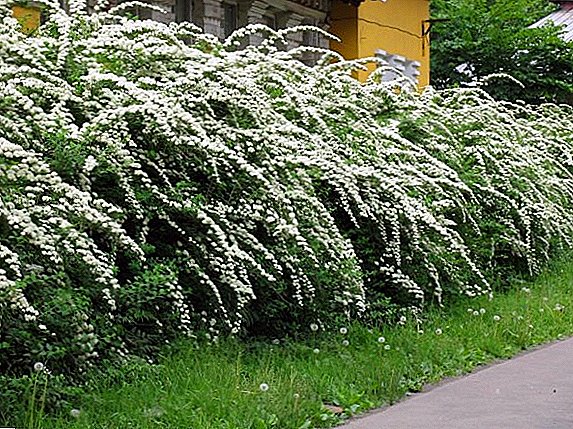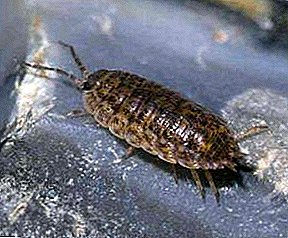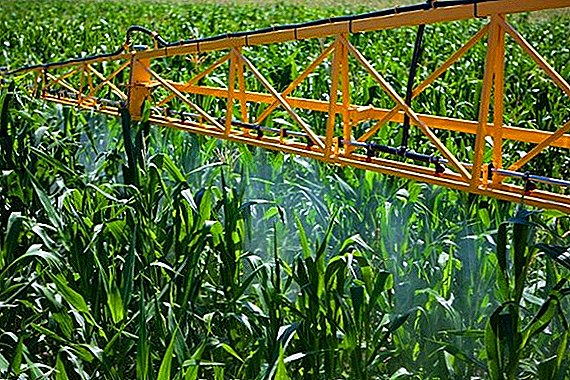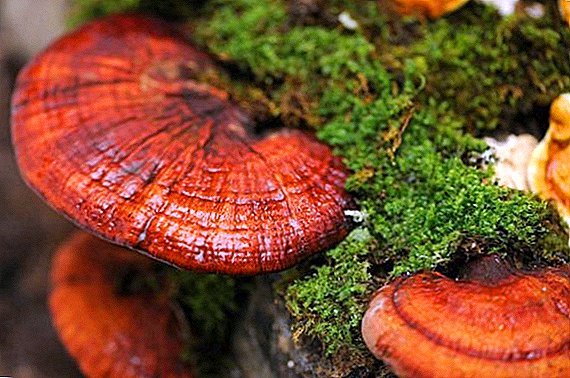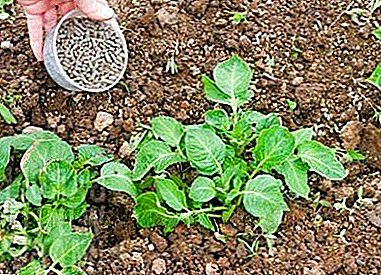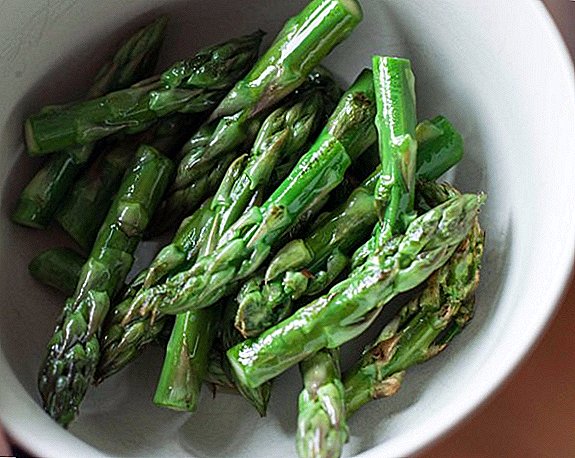 Asparagus - This is a perennial plant belonging to the family of Asparagus. The plant produces long, juicy, dense shoots with small needle-shaped leaves of different shades - whitish, light pink, green, slightly purple. The root system consists of thick, long roots. Due to the composition and qualities of the plant, it is used in recipes of traditional medicine.
Asparagus - This is a perennial plant belonging to the family of Asparagus. The plant produces long, juicy, dense shoots with small needle-shaped leaves of different shades - whitish, light pink, green, slightly purple. The root system consists of thick, long roots. Due to the composition and qualities of the plant, it is used in recipes of traditional medicine.
There are several varieties of this vegetable. What happens asparagus, consider below:
- soy asparagus - a product of soybean processing;
- White asparagus is a popular delicacy ripening from March to June. When growing the plant is completely spud well-fertilized loose soil, preventing the penetration of sunlight, with the result that the plant has a white color. This species is difficult to cultivate, so its cost is high;
- green asparagus - medicinal asparagus, the most common type of plant. Green asparagus contains more vitamins and minerals than white;
- Purple asparagus is a rare species grown in the dark with short sessions of sunshine. Purple asparagus tastes a bit bitter. During heat treatment, the purple color changes to green;
- Bean Asparagus is a popular product. The food consumed beans, past the heat treatment. Ideal for diet;
- sea asparagus - grows on the sea coasts, in salt marshes.

Did you know? Soy asparagus is also known as Korean asparagus. This is not a plant of this type, but a foam which is removed from boiling soy milk when cooking ground soybeans, processed in a special way.
Calorie and chemical composition of asparagus
 In cooking, asparagus is a popular delicacy. Eat shoots of a plant. Asparagus brings both benefits and harm to the human body.
In cooking, asparagus is a popular delicacy. Eat shoots of a plant. Asparagus brings both benefits and harm to the human body.
Asparagus Calories per 100 g of the product is only 21 kcal. The product is rich in vitamins and minerals.
Asparagus contains the following vitamins: A - 82.8 μg, thiamine B1 - 0.1 mg, riboflavin B2 - 0.1 mg, C - 20.2 mg, E - 1.9 mg, beta-carotene - 0.6 mg, PP - 1, 1 mg.
Macro and trace elementsThe ingredients of asparagus are as follows: potassium — 195.8 mg, phosphorus — 62.1 mg, calcium — 21 mg, magnesium — 20.2 mg, sodium — 2 mg, iron — 1 mg.
Chemical composition This useful vegetable contains the following elements:
- Water - 93 g;
- Carbohydrates - 3 g;
- Disaccharides and monosaccharides - 2.2 g;
- Proteins - 2 g;
- Dietary fiber - 1.5 g;
- Starch - 1 g;
- Ash - 0.5 g;
- Organic acids - 0.1 g;
- Fat - 0.1 g
In soy asparagus contains vitamins B, D, E, among the macro elements there is also lecithin, which is involved in cell regeneration and normalizes the nervous system and the brain, and choline, which increases the resistance of cells against harmful factors.
 White asparagus contains vitamins A, B1, B2, C, E. The micro- and macroelements included in its composition are calcium, potassium, phosphorus.
White asparagus contains vitamins A, B1, B2, C, E. The micro- and macroelements included in its composition are calcium, potassium, phosphorus.
Green asparagus has a richer composition of the elements. Vitamins contained in it - A, B1, B2, B4, B9, E, C, K. Among the micro and macro elements are present, in addition to the general list, manganese, copper, selenium and niacin.
Useful properties of asparagus for the human body
The benefits of asparagus for the human body are manifested by the following properties:
- Diuretic effect;
- Lowering blood pressure;
- Slowing heart rate;
- Improve liver function;
- Strengthening the contractions of the heart;
- Laxative effect;
- Analgesic properties;
- Soothing effect;
- Anti-inflammatory properties;
- Blood purifying properties;
- Immunostimulating action
- Improved kidney function.
Scientists have investigated the usefulness of asparagus for men. The plant contains proteins, minerals, carbohydrates, which are important for the male potency.
Separate properties are inherent in soy asparagus. Use it for the prevention of cancer, cardiovascular diseases, osteoporosis.
How to procure and store medical raw materials from asparagus
 For consumption, harvesting of young shoots is done in spring. White Asparagus Shoots harvested while they are in the ground, so that they retain their tenderness and softness.
For consumption, harvesting of young shoots is done in spring. White Asparagus Shoots harvested while they are in the ground, so that they retain their tenderness and softness.
Green asparagus harvested when the shoots reach 20 cm in growth. Under the influence of sunlight, a reaction occurs, due to which the shoots turn green while at the same time acquiring a rougher structure.
Asparagus sprouts should be resilient, smooth, with a slight shiny shimmer. Cut locations should not look dried. It is impossible to keep a fresh product for a long time, as it loses its properties and qualities. Asparagus sprouts are stored in the refrigerator for 5-7 days, provided that the slices are renewed and immersed in water.
Did you know? The longer the asparagus is stored, the worse its taste becomes.
For medicinal purposes rhizomes, grass, fruits and young leaves of asparagus are used.
 Root preparation produce in the autumn, after the wilting of the above-ground parts. They are dug, cleaned from the ground, washed in running water and cut into pieces. In this form, the rhizomes are dried in the open air under a canopy, spread out in a thin layer on fabric or paper.
Root preparation produce in the autumn, after the wilting of the above-ground parts. They are dug, cleaned from the ground, washed in running water and cut into pieces. In this form, the rhizomes are dried in the open air under a canopy, spread out in a thin layer on fabric or paper.
Practiced drying in the oven at temperatures up to 45 °. It is possible to store roots harvested in this way for 2 years.
Asparagus Herb harvested during flowering. Young tops of the plant are cut to a length of about 30 cm. The grass is dried outdoors in the shade or indoors with good ventilation, laying a thin layer on fabric or paper.
Asparagus Fruits harvested when they are fully ripe.
Important! It is necessary to store blanks in paper or canvas bags, in wooden containers.
The use of asparagus in traditional medicine
In folk medicine, asparagus has been used as an analgesic, anti-inflammatory and diuretic.
Medicines containing asparagus in the composition help to lower blood pressure, slow down heart rhythm, increase diuresis and expand peripheral vessels.
Such drugs are used for cardiovascular diseases associated with dropsy of the abdomen and swelling of the lower extremities.
Important! Asparagus helps to cope with various diseases, but it has no effect on a healthy body.
 Asparagus will benefit from diseases such as nephritis, pyelonephritis, pyelitis and other diseases of the genitourinary system. Tachycardia, diabetes, arthritis, rheumatism are also treated with infusions and decoctions of rhizomes of asparagus. Infusion of asparagus rhizomes is used for pain in the joints.
Asparagus will benefit from diseases such as nephritis, pyelonephritis, pyelitis and other diseases of the genitourinary system. Tachycardia, diabetes, arthritis, rheumatism are also treated with infusions and decoctions of rhizomes of asparagus. Infusion of asparagus rhizomes is used for pain in the joints.
It is customary to use asparagus as a laxative. It is used as a means of destroying kidney stones and liver, as well as for the treatment of skin diseases, eczema.
How to use in dermatology and cosmetology
The properties of asparagus have found application in dermatology and cosmetology.
Rhizomes and young shoots Asparagus is used to treat allergic dermatosis, pyoderma, vitiligo, lichen planus, psoriasis. Also in dermatology, asparagus is used in the complex for the treatment of cystic dermatitis as an anti-inflammatory agent.
Asparagus rhizomes are used as a blood-purifying agent for skin diseases, namely, eczema and exudative diathesis.
 In cosmetology, medicinal asparagus is used to affect fading skin cells. With her help support youth. In the spa salons prepare masks for the skin of the face and neck of the young shoots of asparagus.
In cosmetology, medicinal asparagus is used to affect fading skin cells. With her help support youth. In the spa salons prepare masks for the skin of the face and neck of the young shoots of asparagus.
The benefits and harms of asparagus during pregnancy
The question of whether the asparagus is beneficial and not harmful during pregnancy is important to find out before using this product. As for the good, it is definitely present.
Asparagus - a nourishing vegetable containing many trace elements that have a positive effect on a woman’s body and on the formation of the skeletal system of the fetus and its strengthening, on the process of blood formation, formation of connective tissues.
Also, asparagus is a good remedy for edema, as it has diuretic properties. Doctors prescribe folic acid to pregnant women, and its content is high enough in asparagus.

Harm from asparagus during pregnancy may be in the event of an allergic reaction.
Therefore, it is necessary to find out in advance of use whether there is any allergy to the product.
Asparagus and nutrition
Asparagus is a dietary product. which is included in the diet of a large number of diets. It is an excellent source of vitamins, carotenoids, lysine and asparagine amino acids. Asparagus is considered an indispensable product in the diet of people suffering from kidney and heart disease.
Asparagus is consumed fresh, boiled, preserved. Preparing green asparagus instantly, so it is important to perform all actions quickly in the cooking process - in order to preserve the vitamins and taste of the dish. The best ways to cook asparagus - grilled, steamed, in the oven. White asparagus cooks a little longer.
Before heat treatment, you need to cut the hard base of asparagus, rinse the shoots in cold water. Serve asparagus with cheeses, poached egg, in combination with other types of vegetables.
Side effects of asparagus
As any plant, asparagus is a benefit and harm to health in one product in different cases. There are some controversial judgments about the properties of asparagus.
 For example, experts say that asparagus prevents the development of urolithiasis. But some believe that this plant can cause urolithiasis by consuming the product in case of a genetic predisposition to the disease.
For example, experts say that asparagus prevents the development of urolithiasis. But some believe that this plant can cause urolithiasis by consuming the product in case of a genetic predisposition to the disease.
For some people, asparagus is contraindicated due to allergies to the product. Also, the harm of asparagus in the form of an allergic reaction can manifest itself not only when it is ingested, but also when it touches sprouts.
Important! Studies have found that the use of large quantities of asparagus can cause diabetes.
Asparagus does not often cause side effects, but its benefits are clearly proven. Reasonable use of this product will benefit health and gastronomic pleasure.


